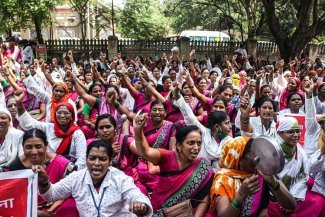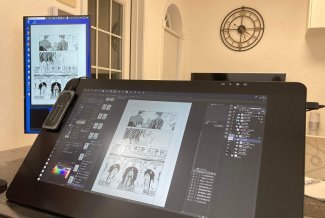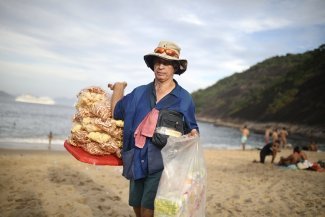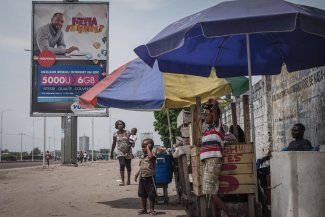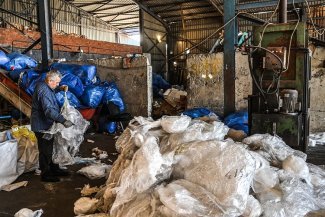There are currently hundreds of men detained on a remote island in the north of Papua New Guinea (PNG), after trying to seek refuge in Australia. Some are ill or injured, many are mentally traumatised and most have been on Manus Island – dubbed “Australia’s Guantanamo” – for three to four years.
Despite international condemnation of their plight, their future remains uncertain. The men are victims of Australian government policies targeting asylum seekers trying to reach its shores by boat.
Late last November, 606 refugees and asylum seekers were moved, some forcibly, from a squalid detention centre on a PNG navy base – a place where six men have died and many more have suffered injuries from violence and self-harm. This followed the PNG government ruling the Australian Offshore Processing Centre (OPC) as ‘unconstitutional’ and closing it down.
Hundreds of men refused to move from the centre, fearing attacks from some of the locals. During the stand-off, the men stayed for three weeks without running water, food or electricity. Despite being the responsibility of one of the world’s wealthiest countries, detainees survived by storing rainwater in rubbish bins and scrounging food. The situation ended with the men forcibly removed to a new, as-yet unfinished site elsewhere on the island. The new holding centre was labelled by the United Nations as “profoundly inadequate”.
Since the relocation, the government of Prime Minister Malcolm Turnbull (of the conservative Liberal Party) has refused access for independent medical professionals to assess the men. The government also rejected requests from senior clinicians who were “deeply concerned” by the physical and mental health of the men.
As Australia has refused to accept anyone arriving to resettle in Australia, the men on Manus are faced with a stark choice: settle in PNG, return home or face an uncertain wait for acceptance by another country.
Last month it was reported that 200 men in offshore detention on Manus and the tiny Micronesian island republic of Nauru could be resettled in the United States, through a deal struck with the Obama administration. Uncertainty remains for the rest.
Meanwhile Australia’s offshoring of its refugee processing to PNG is causing frictions with the local population on Manus. In a country struggling with its own poverty and unrest, the imposition of a transplanted refugee community on their soil has resulted in local landowners blockading the Australian-built centres in protest.
Detainees say they have received death threats from locals, with recent video backing their claims. The response from Peter Dutton, minister for Home Affairs (a new ‘super portfolio’ overseeing immigration announced before Christmas) was to accuse asylum seekers and advocates of fabrication.
It’s a growing list of organisations Dutton has accused of either being wrong or lying, including Amnesty International, the Australian Council of Trade Unions, New Zealand’s government, PNG’s supreme court, more than 100 member nations of the UN, and sometimes even his own department.
During Dutton’s three-year-watch over Manus and Nauru, there has been murder, suicide and death from a lack of medical care. Two people have set themselves on fire. Some have tried swallowing razor blades or ingesting chemicals. Adults and children have sewed their lips shut, while riots and multiple cases of physical and sexual assault between detainees, guards and locals have all been reported.
“In my entire career of 43 years I have never seen more atrocity than I have seen in the incarcerated situations of Manus Island and Nauru,” a deployed trauma-specialist told the Guardian last year.
“They won’t be settled here”
Australia’s former attorney-general recently claimed that “Australia, per capita, runs the most generous refugee and humanitarian migration program in the world”. While it is true that only Canada currently accepts more refugees via “offshore resettlement” (the relocation of those deemed genuine refugees residing in another host country) than Australia, such programmes only represent a tiny proportion of the world’s response to global refugee crisis. Critics also argue that given its physical size and vast economic wealth, Australia should be more generous.
The majority of those seeking refuge in Australia arrive by plane with a valid (tourist) visa and then seek asylum upon arrival. But not everyone can fly. For a myriad reasons people seeking asylum from countries such as Afghanistan, Iraq, Pakistan and Iran, end up in nearby south-east Asian countries.
Faced with an insecure future and long resettlement delays, the last resort can be to pay people smugglers in Indonesia and Sri Lanka to try to reach Australia’s shores by boat. Those intercepted coming by boat are processed offshore, at either Manus or Nauru – a policy in place since 2012 when the then Labor government announced that anyone found arriving by boat would not be settled in Australia. However, once their claims are processed, the vast majority of asylum seekers in OPCs are judged to be genuine refugees.
Dutton has admitted this policy, continued by conservative governments, was “tough” yet necessary to ensure people arrive “in an orderly way” and to crack down on people smugglers. As a result, Australia’s policy has one metric for success: deterring the boats of people smugglers.
And yet the boats keep coming. Except now they are prevented from reaching Australia’s shores, by a multi-billion dollar “ring of steel” stretching across the waters of northern Australia. Intercepted boats are turned back, with allegations that Australian authorities have even bribed them to do so.
“Currently there are over 2000 people who have been languishing in remote islands in the Pacific who are being held hostage to this policy,” Amy Frew, a lawyer for Australia’s Human Rights Law Centre, tells Equal Times. “That people are getting on boats, shows the failure of a regional approach to managing flows of people seeking asylum.”
Whether the boats return, sink in other waters or their passengers return to the persecution they fled initially, seems irrelevant to the government.
Shen Narayanasamy, human rights campaign director for the advocacy group GetUp, says government secrecy around its border operations means the public has no way of verifying the safety of boat turnbacks.
“Australia’s obsession with boat arrivals, and the xenophobic discourse fostered by politicians of all sides has created a climate where intolerable cruelty to asylum seekers is permitted and applauded by the public,” Narayanasamy tells Equal Times.
The Labor opposition has been in lockstep with the government. It was a Labor government that reopened the Manus centre in 2012 and later backed the hardline policies of the conservative government under Tony Abbott.
Dutton is just one of many politicians clinging desperately to a policy of bloody and chaotic outcomes, requiring a bureaucratic cognitive dissonance that says in order to save the lives of boat arrivals, Australia must punish boat arrivals. The government maintains that all detainee suffering is necessary, while exploiting the simmering racial tensions of a tired electorate.
It was in 2012, before Australia’s offshore policy had begun, that Savitri Taylor, an associate professor at La Trobe University in Melbourne, presciently wrote:
“If our only concern is to stop the boats, one obvious option is to ensure that the treatment those who arrive on boats experience in Australia is far worse than the treatment they will receive in any other country in the region. That may work. Of course, we would have to sink so low we would not be able to keep up even the pretense of caring about human rights and the rule of law.”
Politicising the arrival of ‘the other’
It wasn’t always this way. Australia was one of the first countries to sign up to the 1951 UN Refugee Convention. And it was a conservative government that welcomed thousands of “boat people”, refugees from Vietnam, in 1976. This goodwill ended in 2001, when Prime Minister John Howard, facing likely election defeat, seized upon two maritime incidents and politicised the national discourse on refugees.
In August 2001, a Norwegian freighter, MV Tampa, rescued 433 predominately Afghan asylum seekers from their stricken boat. With the Tampa approaching the Australian territory of Christmas Island, Howard deployed counter-terrorism soldiers to board the vessel while introducing new emergency laws to remove the vessels from Australian waters.
Two months later, another refugee boat broke apart, forcing a dramatic rescue by the Australian navy. But once rescued, the immigration and defence ministers accused the asylum seekers of deliberately sinking their vessel and throwing their children overboard.
Between the two incidents, 9/11 happened. In this climate of terror, Howard’s government tapped into a dark vein of racist fear, in a country where ‘White Australia’ policies of exclusionary white migration existed up until 1966.
Aided and abetted by a rabid right-wing press and foaming radio shock jocks, Howard conflated seeking asylum with the so-called War on Terror. Opinion polls showed widespread support of Howard and his policies.
“All of a sudden, the discourse changed, and you didn’t have terrorists anymore; you had Muslim terrorists, and you didn’t have boat people anymore, you had Muslim boat people,” said human rights lawyer Julian Burnside, in Sasha Polakow-Suransky’s recent book Go Back to Where You Came From: The Backlash Against Immigration and the Fate of Western Democracy.
Almost two decades later, Australia’s hardline stance continues, with no end in sight for those offshored to Manus and Nauru.
“Australia, as a wealthy nation is entirely able to institute a fair and internationally-compliant process to assess the claims of asylum seekers, and has the capacity to avoid deaths at sea by working together across the region to provide alternative pathways for those seeking safety,” Narayanasamy says.
Frew agrees. “The government must take a leadership role in the region, and lead a humane and principled response to people seeking asylum. It must lift its gaze beyond our borders and engage productively with other countries to ensure safe pathways for people fleeing persecution to find a safe place to rebuild their lives.”



